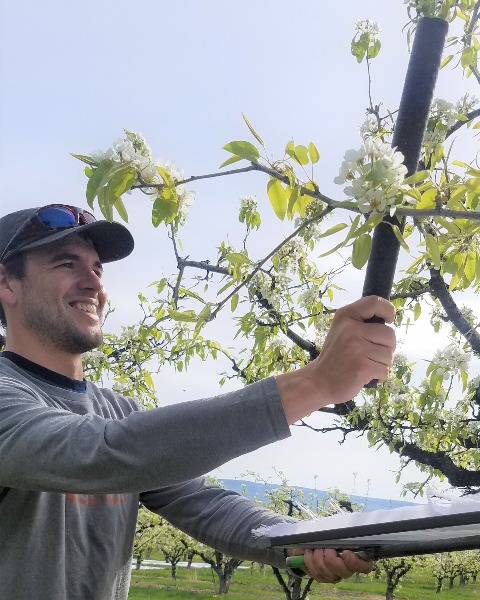Plant-Insect Ecosystems
10-Minute Paper
Integrating European earwig inoculation with spray programs for pear psylla pest management in commercial orchards

Robert Orpet
Postdoctoral Researcher
Washington State University, Tree Fruit Research and Extension Center
Wenatchee, Washington
Louis B. Nottingham
Research Assistant Professor
Washington State University
Wenatchee, Washington
Presenting Author(s)
Co-Author(s)
Integrated pest management (IPM) was originally developed as a framework to combine chemical and biological control for effective agricultural pest suppression. In Washington State, management of the key pear pest psylla (Cacopsylla pyricola) is typically over-reliant on pesticides. Lack of integrated management has resulted in chronic pear psylla problems because biological control is key to keeping this pest suppressed. We analyzed pest and natural enemy scouting data from 2017 to 2020 and found that a key pear psylla predator, European earwig (Forficula auricularia), was absent in 12 out of 14 conventionally managed orchards studied but was absent in only 1 out of 11 organically managed orchards studied. Univoltinism and low dispersal ability may explain why European earwig populations cannot easily recolonize orchards where populations have been lost. We next tested whether releases of European earwig into two conventional pear orchards with no preexisting earwig population and one minimally managed research center orchard with a low earwig population would increase pear psylla suppression and result in establishment of a large earwig population in future years. Our findings suggest that European earwig releases could improve pear psylla suppression, but these predators will only persist where pesticide programs are judiciously designed as part of a larger integrated strategy.

